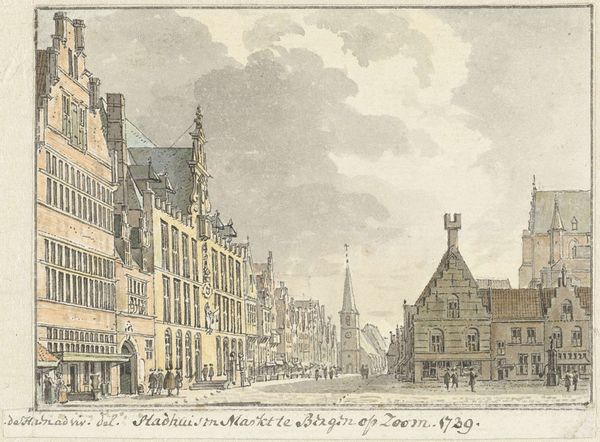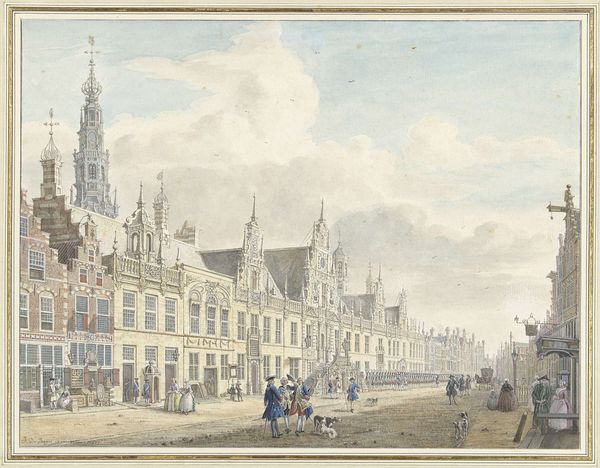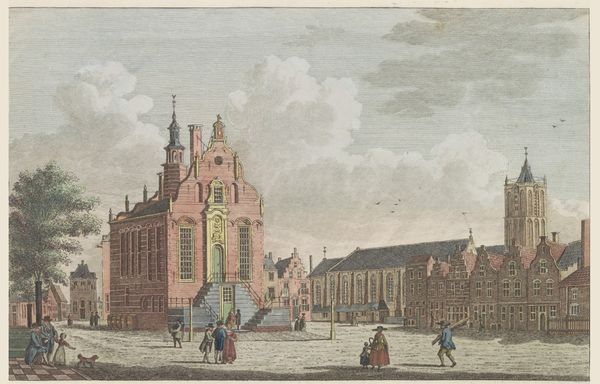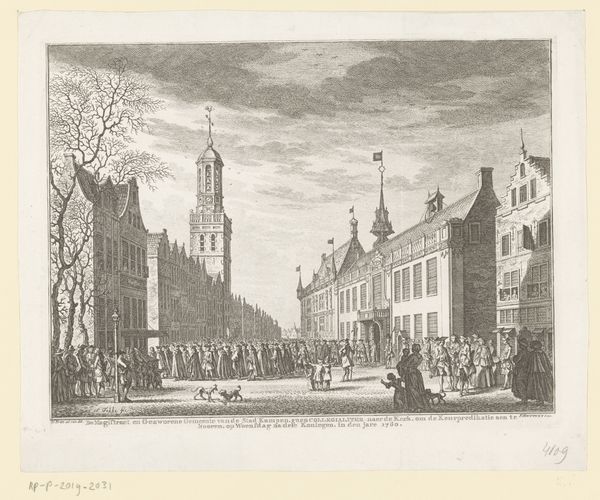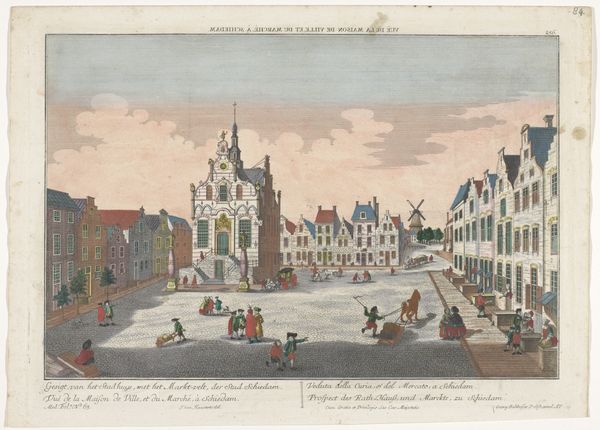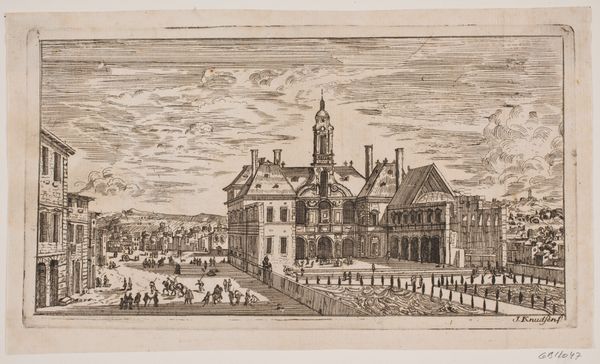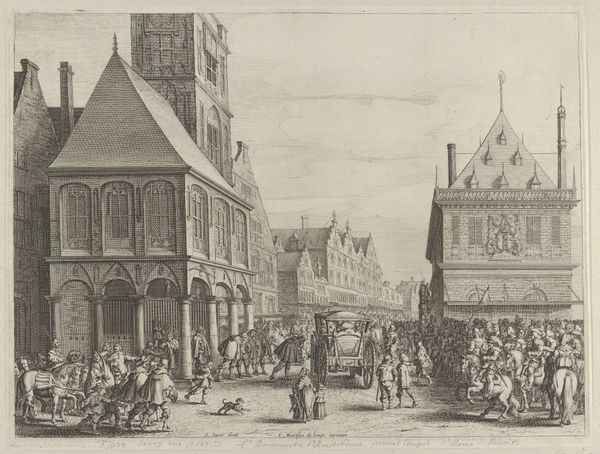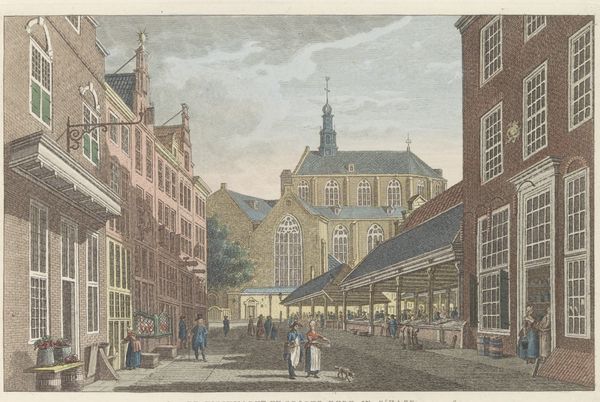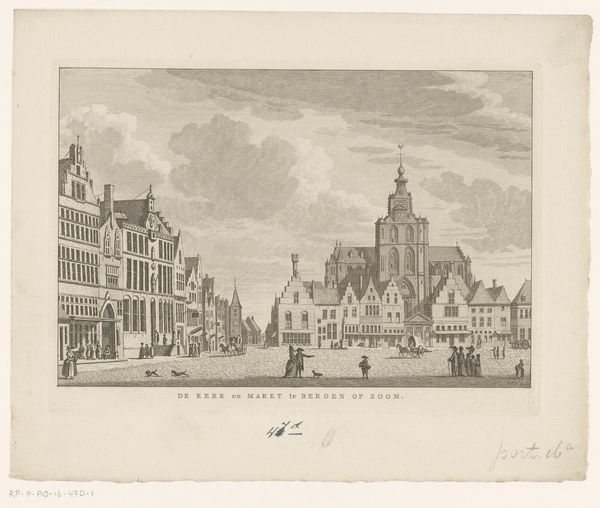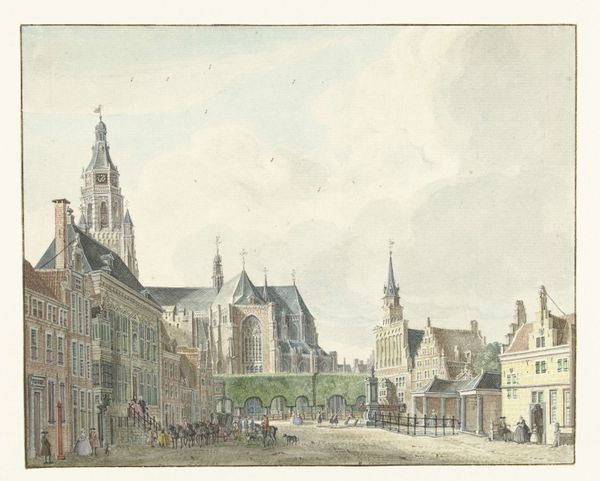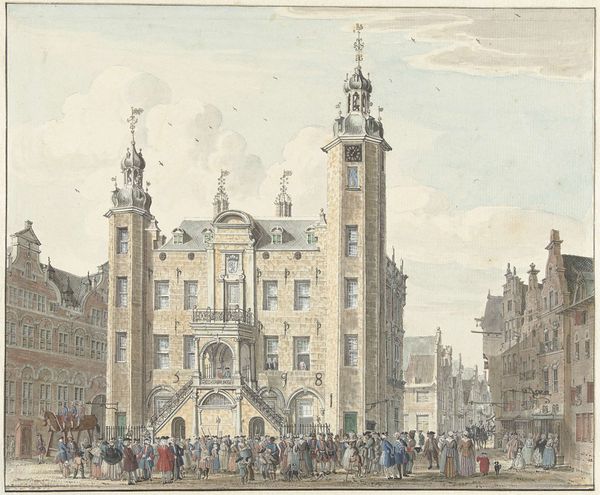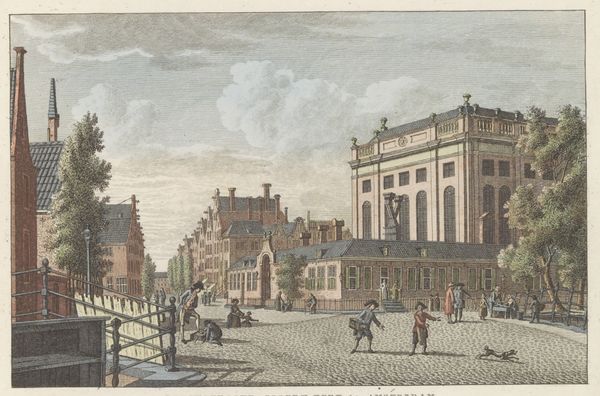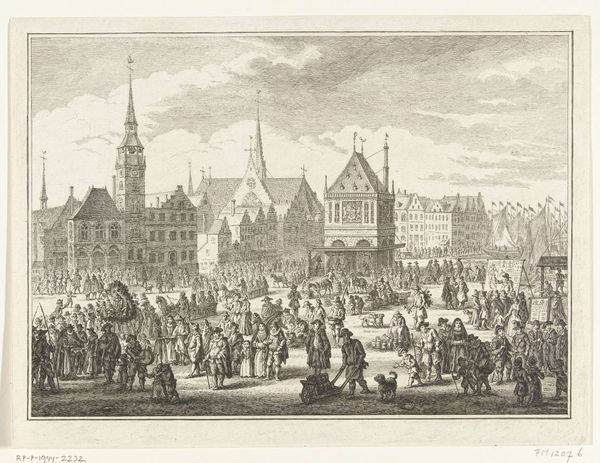
drawing, coloured-pencil, print, pencil
#
drawing
#
coloured-pencil
# print
#
landscape
#
coloured pencil
#
romanticism
#
pencil
#
cityscape
#
watercolor
Dimensions: height 172 mm, width 245 mm
Copyright: Rijks Museum: Open Domain
Editor: This is "Neude te Utrecht, ca. 1790" by Carel Frederik Bendorp, likely made between 1786 and 1825. It’s a drawing with colored pencil, showcasing a bustling cityscape. I'm struck by the rigid geometry of the buildings and how it contrasts with the organic forms of the people populating the square. What can you tell me about the cultural context of this scene? Curator: This print gives us a valuable glimpse into urban life in Utrecht during a period of significant social and political change. Notice how the architecture emphasizes order and civic pride. But look closer at the figures; are they idealized? Or does the artist include elements of everyday reality, like the working class laboring in the square? Editor: I see what you mean. They're not posed or particularly elegant, more like ordinary folk going about their business. Does the print’s distribution play into that? Was it meant for a wide audience? Curator: Precisely! Consider the rise of print culture during this era. Prints made art accessible to a broader public. Do you think this cityscape serves a particular function in shaping the public's perception of Utrecht? Does it portray the city as thriving, well-ordered, and worthy of investment? Editor: It definitely projects an image of a functional, busy city center. It’s interesting how this seemingly simple street scene subtly conveys a message about civic identity. Curator: Exactly. These visual representations contributed to a collective understanding of urban spaces and their importance within a broader social and political framework. Examining the distribution of the prints reveals to whom this image of Utrecht was broadcast, and why it mattered. Editor: I've never thought about cityscapes having such a political dimension! It changes how I perceive these types of images. Curator: That's the power of art history: It illuminates the layers of meaning embedded within even the most unassuming depictions. Editor: Thanks so much. I’ll definitely look at cityscapes differently from now on.
Comments
No comments
Be the first to comment and join the conversation on the ultimate creative platform.

